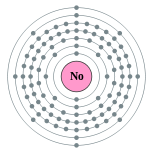Magnesium (#012, Mg)
Janet Kuypers
from the “ Periodic Table of Poetry” series
All this time,
I’ve only known you from afar.
Every once in a while,
I’d see you in the distance
while I was driving down the street.
I may have seen you
only eleven times in my life,
and I know a part of you
is essential in all of my living cells,
but as I said,
I’ve only seen you from afar.
Once, I saw you
outside my bedroom window
after the first snowfall
covered the land in a blanket of white.
That’s when I saw you
walking outside alone,
looking for your next meal.
I know you can leave
me with a sour taste,
but I know you are needed
in ATP, DNA, RNA,
and it aches me to see you suffer so.
I think I saw you with your children
as I sat out on the balcony
of a father’s house —
I watched you in the distance,
but I didn’t watch you alone.
After a while
someone said to me
that you looked peaceful,
but at another time
they would have shot
and killed you instead.
As I said,
I only see you from afar,
so I try to learn
of how you were created
from such large places,
at temperatures higher
than anything we could imagine.
I tried to learn,
because one day
I was told to go outside,
and that’s when I saw you
laying down among the trees,
never to walk away
from my home again.
I’ve always only
seen you from afar,
and suddenly,
as you lay there,
I could see your organs
shriveled and sunken in
after your skin
had pulled away
as you wasted away.
Suddenly
I could see traces
from your capillaries,
and I could trace
your rib cage,
outline your spine.
I know the heat that created you.
I know you’re highly flammable,
and I know that when you start to burn
you’re impossible to stop.
You fire bombed
in World War Two,
and the only way
they could stop you
was by dumping dry sand on you,
because you’d burn through the air,
and you’d even burn under water.
That’s why you’ve been used
in fireworks and in flares.
That’s why you’ve been used
for illumination and flashes
in photography.
So they call this
momento mori,
I thought,
when I grabbed my camera
to photograph you
in your final resting place.
Because
even though
I’ve seen you,
I’ve needed you, and
I’ve known the damage
you can do,
I needed to photograph you
right then and there.
I’m sorry.
I needed to
remember you this way.



